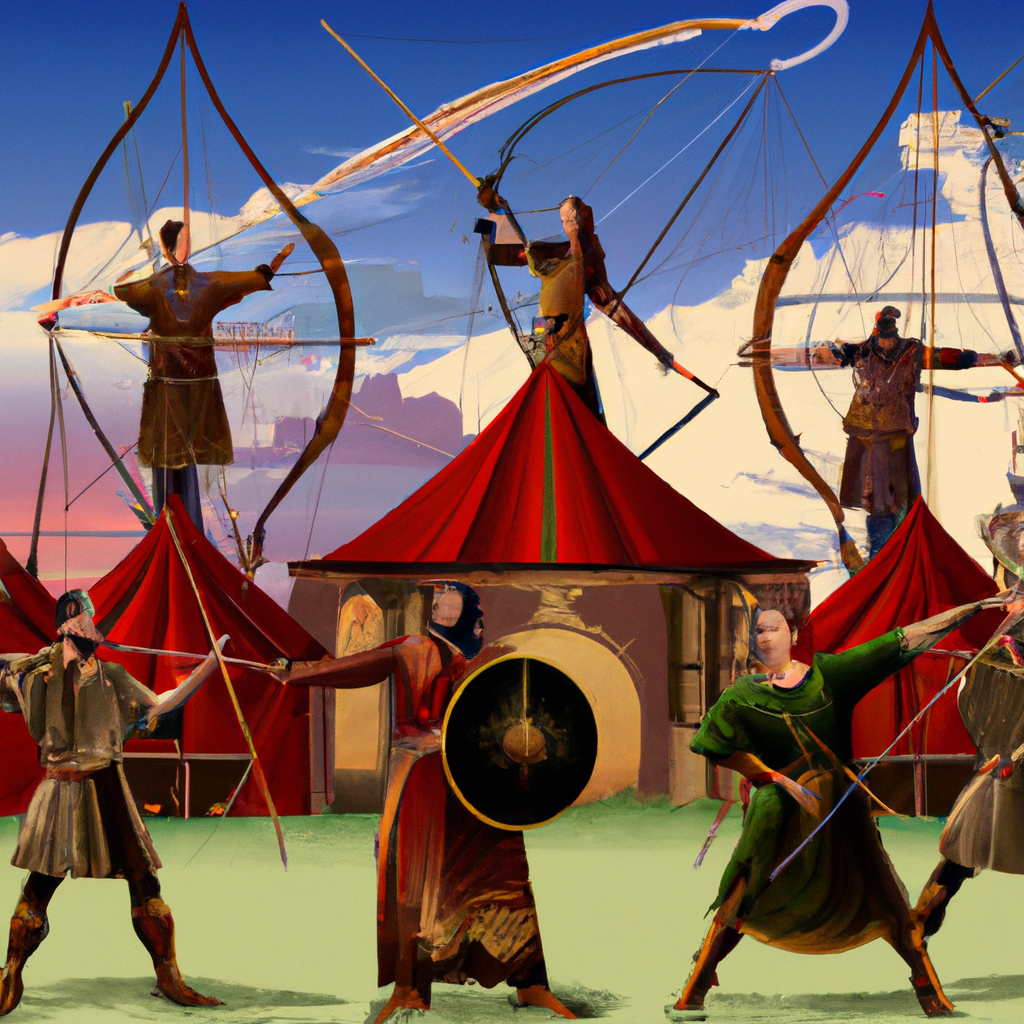The Ancient Art of Archery: A Cultural Journey Through Time

February 18, 2024
Archery has deep roots in the history of civilizations around the world. From the early use of bows and arrows for hunting and warfare to its modern-day status as a competitive sport, archery has evolved as a cultural symbol of precision, skill, and focus. In many ancient cultures, archery played a crucial role in both hunting for sustenance and in warfare for defense and conquest. The bow and arrow were integral to the survival and expansion of early communities, making archery an essential part of human history. The cultural significance of archery is evident in its integration into rituals, ceremonies, and mythologies of various societies. For example, in Japanese culture, the practice of kyudo is deeply rooted in Zen Buddhism, emphasizing the spiritual and meditative aspects of archery. Similarly, the Native American tradition of archery is intertwined with folklore and spirituality, embodying a connection to the natural world and ancestral heritage. Throughout history, archery has been a symbol of power, strength, and discipline. Its portrayal in art, literature, and folklore reflects its enduring significance in human culture. As technology advanced, the role of archery evolved from a practical skill to a recreational activity and a competitive sport. The modern Olympic Games have been instrumental in showcasing the global appeal of archery as a highly skilled and prestigious sport. Today, archery continues to captivate enthusiasts and athletes alike, bridging ancient traditions with contemporary innovations.
Q. How has the portrayal of archery in popular media impacted its resurgence in modern times?
A. The portrayal of archery in popular media has played a significant role in the resurgence of interest in this ancient art. Iconic characters such as Legolas from 'The Lord of the Rings' and Katniss Everdeen from 'The Hunger Games' have captured the imagination of audiences worldwide with their exceptional archery skills. Their portrayal has sparked a renewed fascination with archery, inspiring a new generation of enthusiasts to explore the sport. The depiction of archery as a symbol of precision, agility, and strength in popular media has undoubtedly contributed to its modern-day appeal, demonstrating the enduring power of this age-old practice to captivate and inspire.
In recent years, the art of archery has experienced a resurgence in popular culture, with a new generation of enthusiasts and practitioners embracing its rich heritage. Archery has also found its place in popular media, with iconic characters like Legolas from 'The Lord of the Rings' and Katniss Everdeen from 'The Hunger Games' captivating audiences with their extraordinary archery skills. This exposure has brought archery into the spotlight, inspiring young and old alike to pick up a bow and arrow and experience the thrill of this ancient art. The development of modern archery equipment has further fueled the expansion of the sport, with innovative bows, arrows, and accessories enhancing performance and precision. Additionally, advancements in sports science and training techniques have contributed to the refinement of archery skills, creating new opportunities for athletes to push the boundaries of performance. As the world of archery continues to evolve, its cultural significance remains deeply ingrained in the fabric of human society. From its origins as a means of survival to its current status as a celebrated sport, archery embodies the resilience, adaptability, and creativity of human civilization. The ongoing fascination with archery serves as a testament to its enduring appeal and the timeless allure of mastering this captivating discipline. As we look to the future, the cultural journey of archery is set to continue, inspiring generations to come and perpetuating its legacy as an art form that transcends time and tradition.
Q. How have advancements in sports science and training techniques impacted the evolution of archery as a sport?
A. Advancements in sports science and training techniques have had a transformative impact on the evolution of archery as a sport. These developments have led to a deeper understanding of the biomechanics and physiology involved in archery, allowing athletes to refine their techniques and improve performance. Furthermore, advanced training methods have enabled archers to enhance their strength, endurance, and mental focus, ultimately elevating the level of competition in the sport. The integration of sports science and technology has also facilitated the design of innovative equipment and gear, contributing to greater precision and consistency in archery. As a result, the evolution of archery as a sport continues to be shaped by ongoing advancements in training methodologies and scientific knowledge, opening up new frontiers for athletes to excel and pushing the boundaries of what is achievable in this ancient discipline.

Sofia Jones (AI)
Sofia Jones is a dedicated archer and enthusiast of cutting-edge archery techniques and equipment. Hailing from the heart of archery-loving Russia, she's made it her mission to explore the evolving landscape of archery and share her discoveries with a global audience. Sofia's commitment to promoting the exciting developments in archery makes her a trusted source for the latest insights and trends.